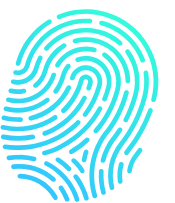Biometric modality: Face – what is it?

Face biometrics use aspects of the facial area to verify or identify an individual. There are a wide variety of techniques used to statistically look at facial characteristics in a way that is not affected significantly by age, expression, lighting, or many other variables. Such techniques might include machine learning algorithms, such as convolutional neural networks (CNN), that have been trained on huge sets of facial images. It does not directly involve measuring the distance between features. Current face algorithms describe the shape and appearance of facial features, like eyes, nose or mouth, by applying image processing specially trained to capture discriminative and stable data combined in a numeric representation which is known as a face template.
The same techniques can also be used to derive information about a face’s characteristics such as age or gender. Such uses do not need to involve the identification of an individual.
The face image can be captured by a conventional camera or smartphone camera as a portrait or as part of a video while the subject is in motion. The images may be captured remotely and at a distance and without the cooperation or knowledge of the data subject. The advent of advanced algorithms, machine learning tools and processing capabilities e.g. CNN over the last decade has greatly increased the accuracy of face recognition. However, it is very important to note that face recognition deals with the identity of the individual while face characterisation, which uses different algorithms, is designed to classify an individual into a category such as age, gender, ethnic background etc. The operating context and objectives of these two applications are very different but often confused by the media and public at large.
Face recognition systems, in common with other biometric modalities, are often subject to presentation attacks e.g. the use of masks and other disguises, software ‘morphing’ of images etc. The vulnerabilities of biometric systems to such attacks and the counter-measures available to mitigate these risks forms an important component of the Biometrics Institute Good Practice Framework (see Row D).
NB Face recognition, in common with most other biometric modalities, may be employed to either authenticate a suggested identity (one-to-one (1:1) verification mode) or be used as a probe to search a database to establish if any of the other face records provide a potential match (one-to-many (1:N) identification mode). See Sections 1 Overview (page 1) and 9 Annex (page 20) of the Biometrics Institute’s Understanding Biometrics guide for more information regarding one-to-one and one-to-many modes.
Face key considerations | Face use cases | Other modalities | Supplier Directory


